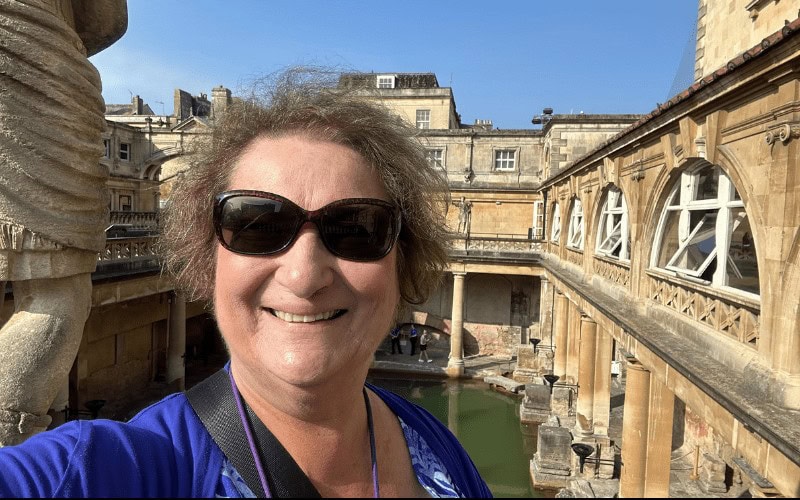Make the Roman Baths in Bath a Sightseeing Priority
The Roman Baths in Bath, England, is the city’s foremost must-see attraction.
If you only have time to visit one historic site in the city of Bath, make it the Roman Baths.
It’s small enough to enjoy in about an hour, includes an excellent audio guide, and is enlivened by numerous projections of Roman-clad people going about their bathing business.
I’ve visited the Roman baths three times over the past ten years and each time, I discover something new.

Roman Baths at a Glance
- Enjoy views of Bath Abbey from the museum terrace
- Discover the ancient history of the sacred spring
- Explore fascinating displays and costumed recreations that bring ancient Aquae Sulis to life
- Consider a guided tour to get the most out of your visit
- Stay at the Harington’s Boutique Hotel in the center of Bath
Location of the Roman Baths
The Roman Baths are located next to the Pump Room in the center of Bath. It’s a short walk from the train station.
When you arrive, you may find quite a crowd gathered and signs indicating which time slot is currently being accommodated.
If you didn’t get tickets in advance, ask the person marshaling the crowd if you can still get in. I did this on a recent visit and the attendant promptly stood aside and motioned for me to walk right in, bypassing the long line. I didn’t stop to question my good fortune.
That said, I wouldn’t count on getting in without buying your ticket in advance. You can purchase tickets online from the official website or choose a tour.
Audio Guide
The price includes an audio guide with two tracks in twelve languages. The regular track provides the usual historical context in short and interesting installments.
The children’s track includes first-person accounts by the many characters that wander across screens projected throughout the museum. I alternate between the adult and children’s tracks. Both are excellent.
Touring the Baths
The clearly signposted route starts on the terrace, which consists of a walkway surrounding the baths.
This structure and the statues of various Roman bigwigs are Victorian additions that were built atop the Roman ruins to house the museum when it opened in the late 19th century.
The terrace is a delightful space surrounded by warm Bath stone and with the façade of Bath Abbey looming in the background. Below are the deep green waters of the main pool. Bath has been a mecca for health-seekers for two millennia.
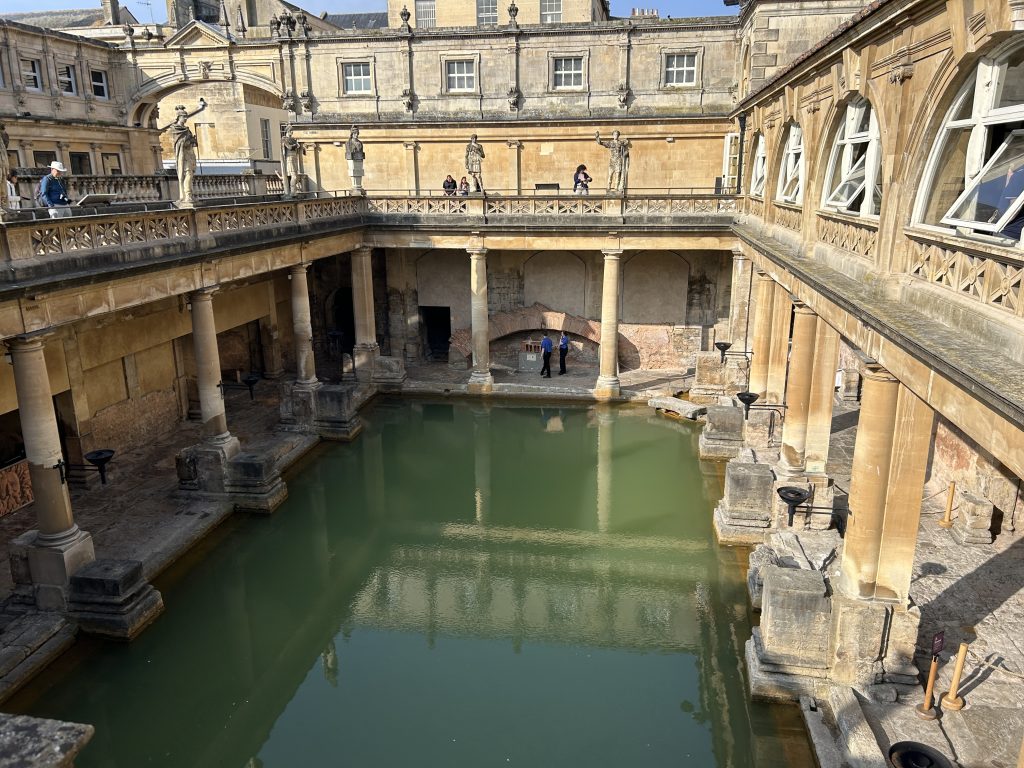

Hot Springs History
While touring the museum, you’ll learn that Bath is the only place in the entire country that has hot springs—three of them. No wonder people have been coming here for millennia.
Before the Romans arrived, the local Dobunni tribe worshipped the goddess Sulis at the sacred spring. In those days, the heated natural spring was a bubbling, steaming pool surrounded by a thick swamp.
When the Romans arrived, they incorporated worship of Sulis into their own pantheon and so transformed her into Sulis Minerva and called the settlement Aquae Sulis.
The Romans were generally “equal opportunity” when it came to accommodating other religions, so long as the people practicing them rendered unto Caesar the necessary taxes.
In Roman Britain, the legionnaires who first conquered the area must have been very happy to have found a place where they could soak their weary bones in warm water in the midst of a Great Britain winter.
In the 17th and 18th centuries, Bath developed into one of the world’s most fashionable watering holes. Everyone who was anyone came here to take the waters. Jane Austen herself bathed here.
Museum Exhibits
The tour leads back indoors and descends through several rooms full of artfully displayed exhibits about the Romans.
Enlivening the experience are screens projecting a selection of Roman bathers who would have frequented the baths back in the day. It’s a clever way to bring history to life and makes you feel like you’re witnessing it firsthand.
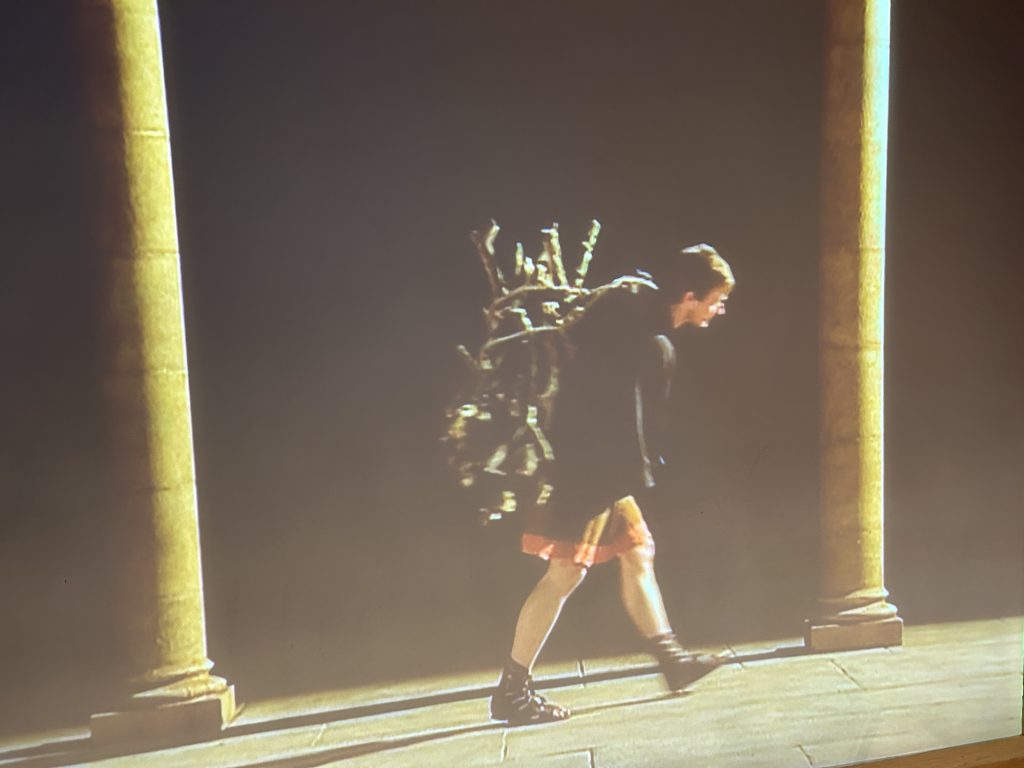
You can listen to a blacksmith on the audio guide while watching a screen showing him hard at work making armor.
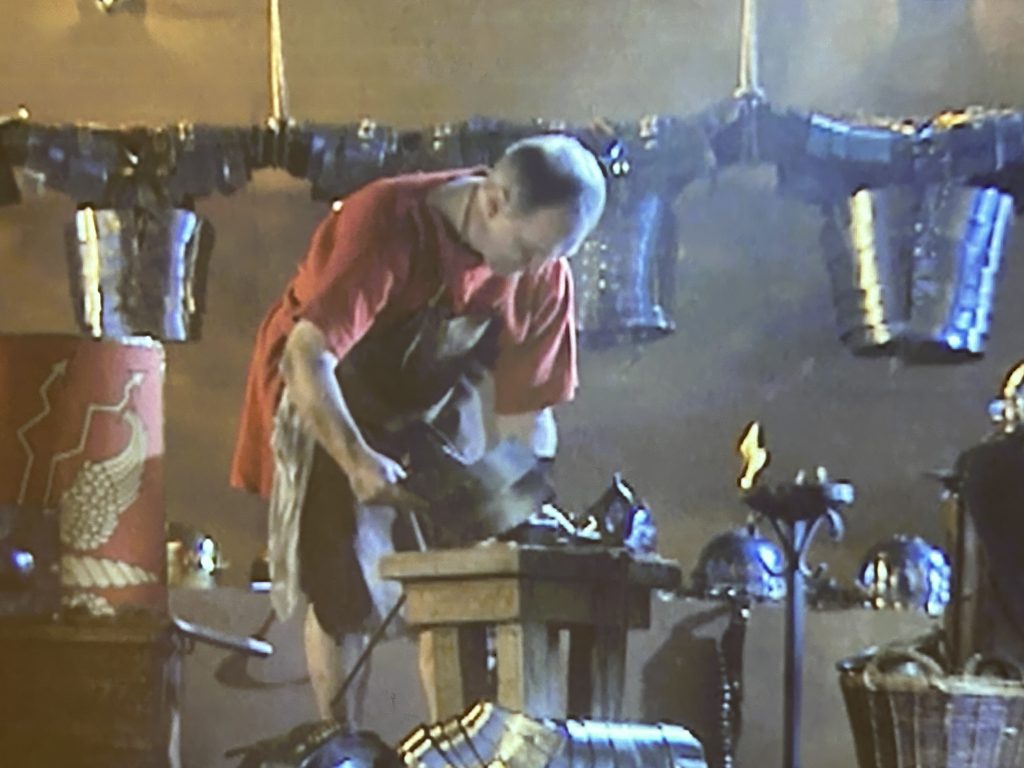
The Baths
The exhibits give way to a series of walkways leading across the archaeological remains of the various rooms in the Roman Baths.
The Romans took their health seriously. There are rooms for getting massaged and plucked (apparently, the Romans weren’t keen on body hair), rooms for bathing in various water temperatures, and even a gymnasium where Romans got good and sweaty in humid air that still smells of sulfur.
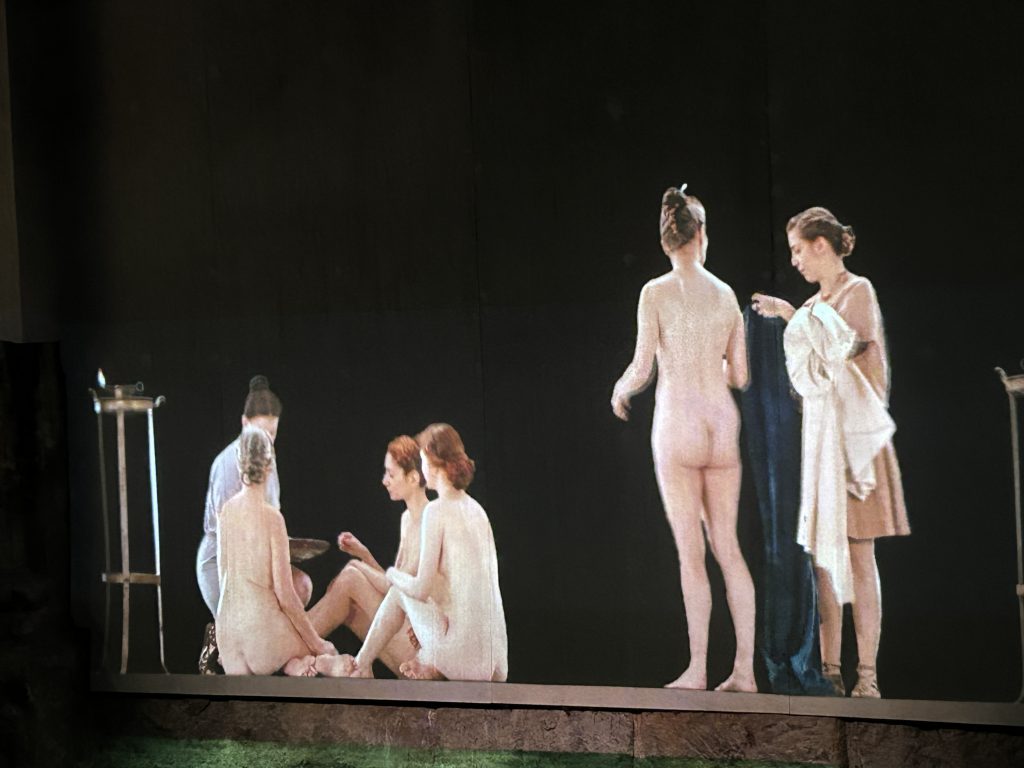
The ruins themselves don’t photograph particularly well. Here’s one room showing the bricks that would have been under the floor to supply the heating.
The audio commentary provides details about the impressive heating and cooling mechanisms. The Romans certainly knew how to engineer.
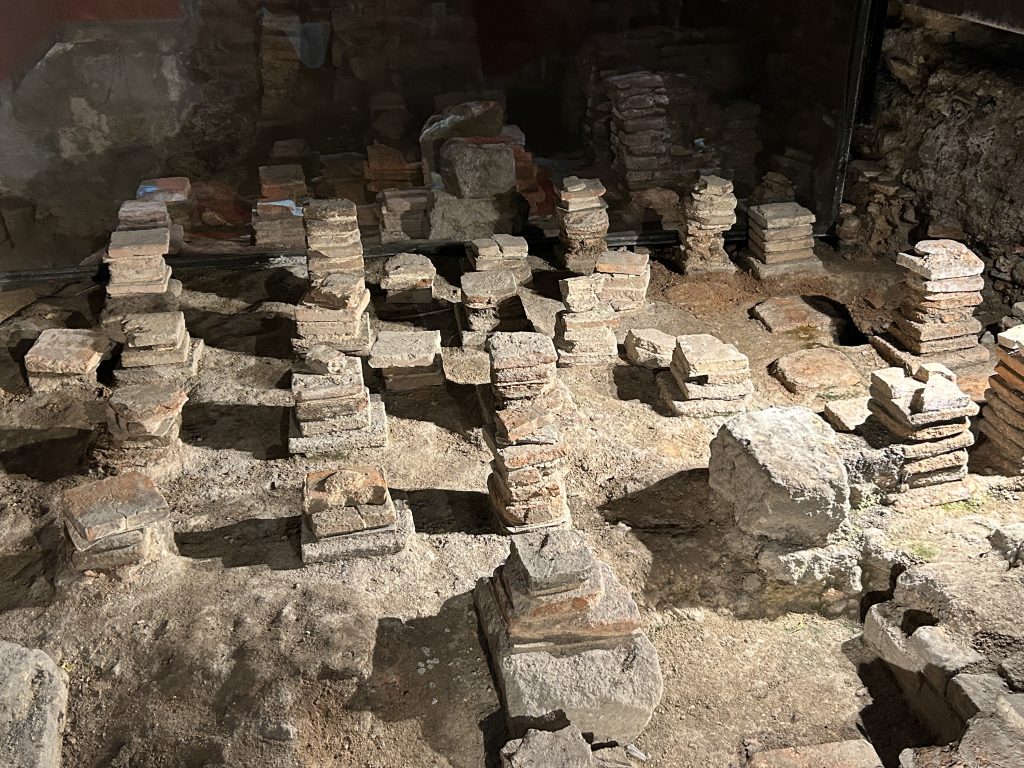
Minerva Sulis
One of the most striking artifacts on display is the gilt bronze head of the goddess Sulis Minerva. It’s a rare and beautiful example of ancient craftsmanship.
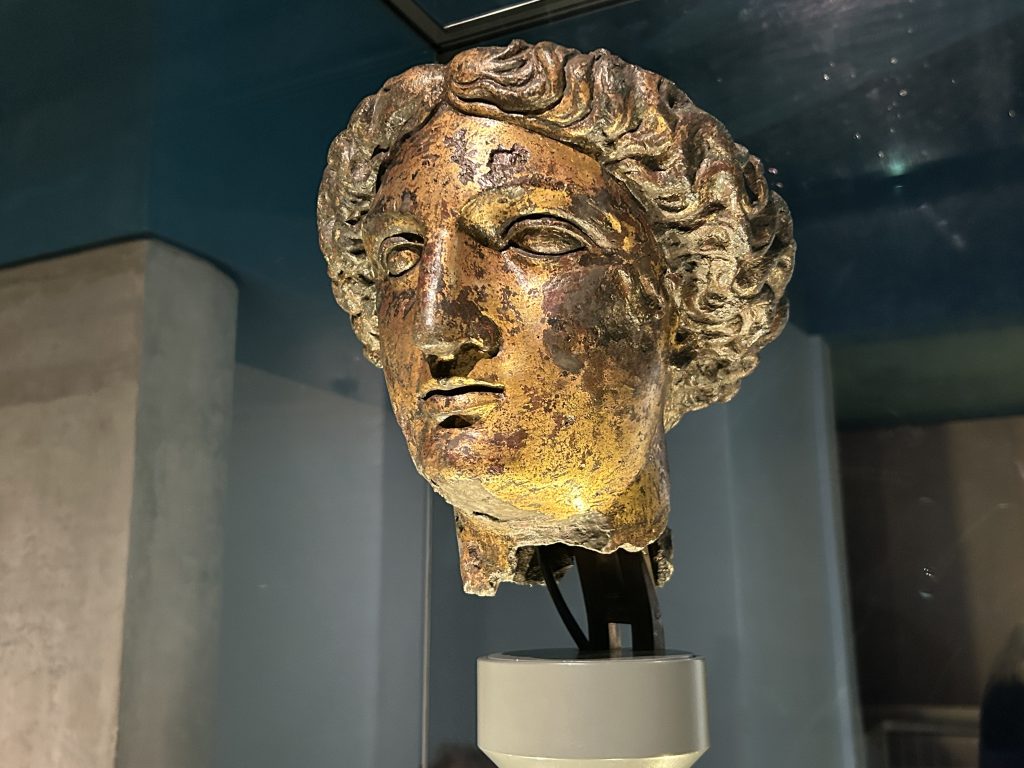
Outside next to the large pool sits a Roman-clad guide. She acknowledges me with a regal nod when I take her picture. I’m unsure if she’s meant to speak or if her job is to sit by the pool all day and have her picture taken.
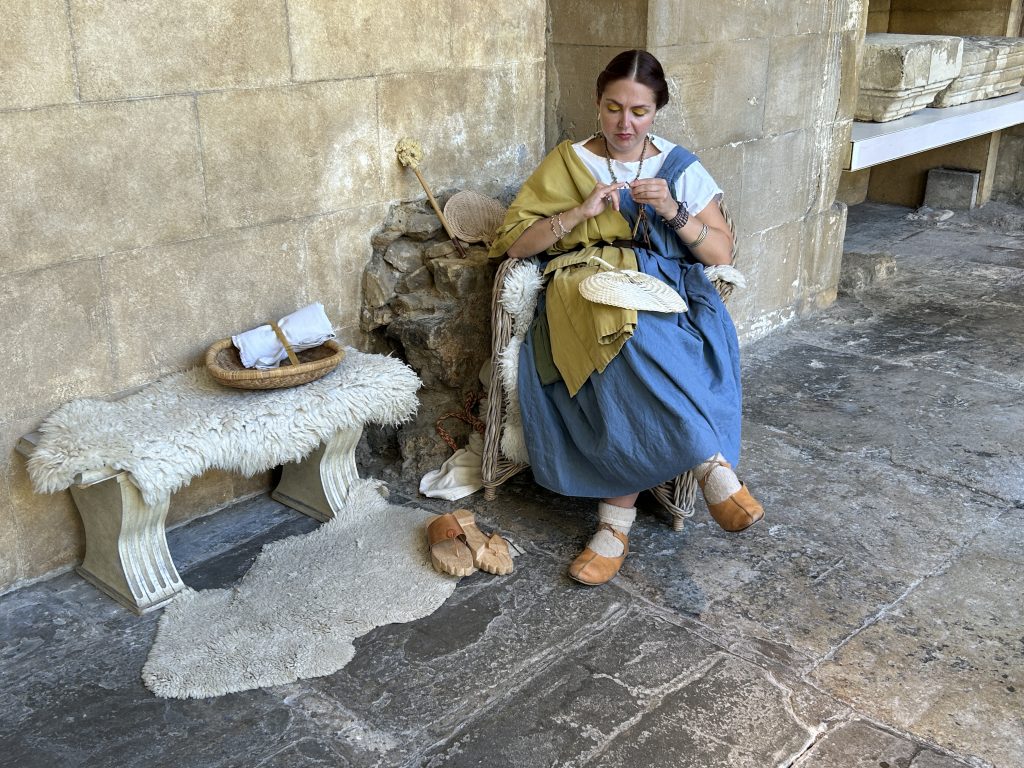
Bath Tours
Bath is unique in that it has two inscriptions as a UNESCO World Heritage site. In the 1980s, the town was inscribed for its Hot Springs, Roman archaeology, Georgian buildings and natural landscape setting.
And then just a few years ago in 2021, it was awarded a second inscription as one of the Great Spa Towns of Europe.
The best way to explore Bath is through a walking tour. GuruWalk lists pay-what-you-please walking tours that connect tourists with tour guides.
Tours and Tickets
If you’re a Bridgerton fan, you may find this tour fun:
Conclusion
Ruins can be challenging to enjoy because they are, well, ruins. The Roman Baths manages to bring the stony vestiges of a once great Roman hangout to life with its thoughtful use of projections and audio commentary.
As you exit the museum, you can enjoy a cupful of the medicinal waters to give you energy for more Bath sightseeing.
The Roman Baths are open from 9 am to 10 pm from July 20 to August 31, and from 9 am to 6 pm from September 1 to December 31. Buy your tickets online from the museum’s website.
Have you visited the Roman Baths? Share your comments and suggestions in the comments below.
Here are posts about other Interesting Museums:
